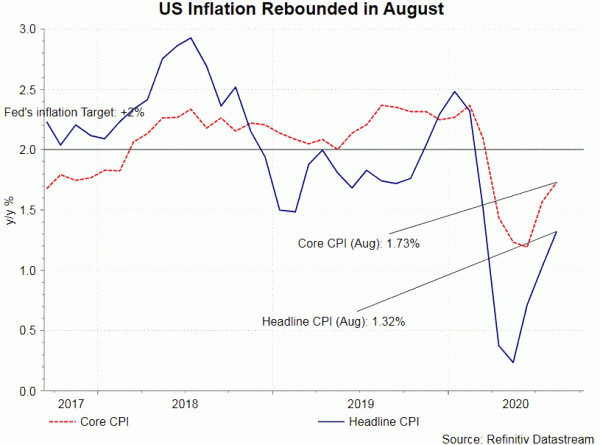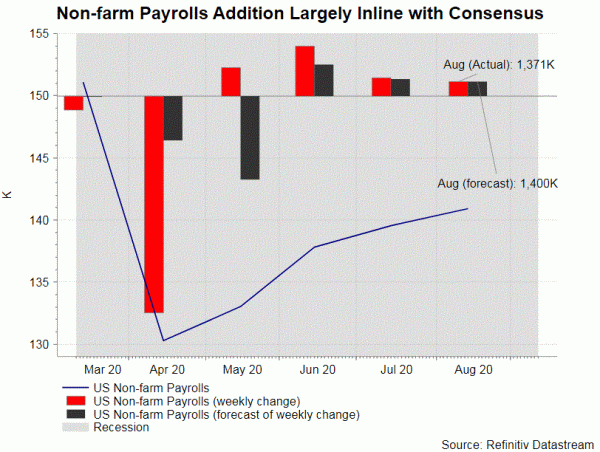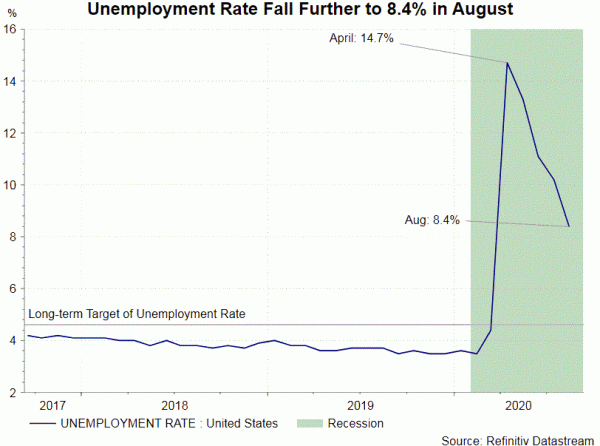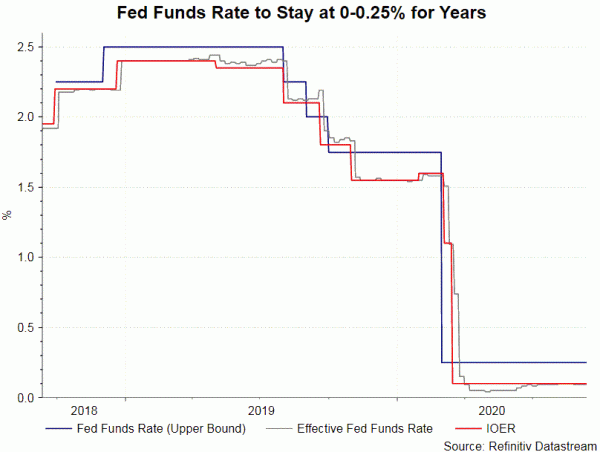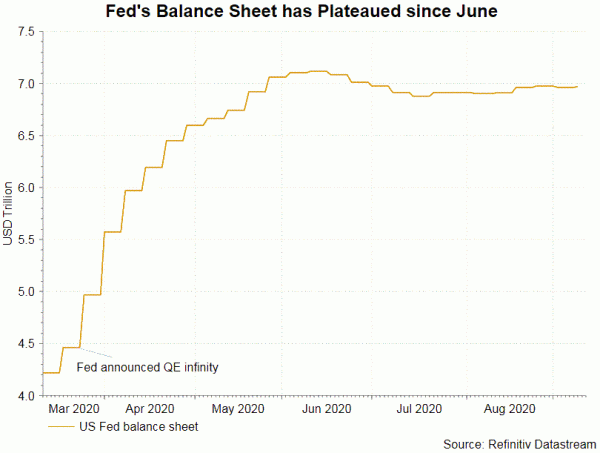After announcing to adopt a new monetary policy framework at Jackson Hole symposium weeks ago, the focus of the upcoming FOMC meeting is on the more clarification of average inflation targeting, the members’ view on the economic outlook (to be revealed in the policy statement and the staff economic projections) and the outlook of the policy rate (to be revealed on the median dot plot.
We expect the Fed to acknowledge the economic recovery since the July meeting, while reinstating that risks remain skewed to the downside. Headline CPI accelerated to +1.3% y/y in August, beating consensus of +1.2% and July’s +1%. Core inflation also picked up to +1.7%, compared with consensus of +1.6%. As the average inflation target approach signals that the Fed would tolerate overshooting inflation more than undershooting, the current inflation outlook continues to justify a dovish monetary stance. On the job market, non-farm payrolls added +1.3M in August, largely inline with expectations. The employment situation has been improving gradually, sending the unemployment rate to 8.4% last month. Yet, this remains far below the long-term target of about 4.5%. At the staff economic projections, we expect to see upward revisions on GDP growth and inflation forecasts for this year and in 2021. The unemployment rate will also be revised lower for this and next year, to reflect the better-than-expected economic developments since the last update in June.
On the monetary policy, the Fed will leave the policy rate unchanged at 0-0.25%, the effective lower bound. It will also keep unchanged monthly purchases of US$120B of US Treasury and MBS. At the annual Jackson Hole symposium, Fed Chair Jerome Powell announced the new approach to deal with the dual mandate- price stability and, maximum and sustainable employment- of the Fed monetary policy. The Fed will move to average inflation targeting, seeking to achieve “inflation that averages 2% over time”. As Powell noted, “following periods when inflation has been running below 2%, appropriate monetary policy will likely aim to achieve inflation moderately above 2% for some time”. The Fed did not indicate what level of above-2% inflation is tolerable, however.
Powell also suggested that the Fed aims to “mitigate shortfalls” of maximum employment, rather than “deviations” of employment from its goal. This change signals that policymakers will be more concerned about employment which is below maximum than above its full-employment mandate. An unemployment rate below the estimated natural rate of unemployment should be a sufficient reason for the Fed to tighten its monetary policy.
We expect to see some adjustments on the policy statement to reflect the shift to average inflation targeting, from the +2% target. For instance, the reference regarding a “symmetric 2 percent inflation objective” could be replaced by “inflation that averages 2% over time”. While the Fed will eventually adopt an outcome-based forward guidance, it is unlikely that a change will be made at the September meeting.




